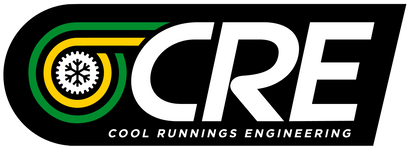
Aquamist HFS3 vs. HFS4: Unveiling the Evolution of Water Injection Systems
Aquamist HFS3 vs. HFS4: Unveiling the Evolution of Water Injection Systems
Aquamist, a pioneering force in water injection technology since 2003, has consistently raised the bar when it comes to optimising engine performance. Their latest offerings, the HFS3-v3.12 and HFS4-v3.12 systems, represent the culmination of years of innovation, delivering precise water/methanol injection for modern high-performance engines. In this blog post, we'll explore the advancements of both systems, helping you choose the right one to unlock the full potential of your engine.

Aquamist HFS3-pwm: Precision Meets Simplicity
The HFS3-v3.12 system is designed to cater to the specific requirements of modern high-performance engines. It combines precision with user-friendly features to make water/methanol injection accessible to enthusiasts and professionals alike. The HFS3 system cater for engines fitted with port injection, and is capable of utilising injector duty cycle input or map sensor input to control the duty cycle of injection. More on this in a moment!
Standard Features for Easy Installation
Aquamist understands the value of your time, and that's why the HFS3-v3.12 system is equipped with features to streamline installation:
- Dash Gauge: Real-time monitoring is made easy with a dash gauge that keeps you informed about your water/methanol injection system's operation.
- Flow Sensor: The system includes a flow sensor for precise measurement and control of the injected fluid, ensuring optimal performance.
- "Plug and Play" Design: Aquamist has prioritized user-friendliness with a "Plug and Play" design, reducing installation time and hassle.

Seamless Integration with Engine Management
To achieve the perfect balance of water to fuel flow under all engine loads, the HFS3-v3.12 system relies on data from your engine management system. It taps into the fuel flow (IDC) or manifold pressure signals (MPS), enabling real-time adjustments to the water injection flow. This integration ensures your engine operates efficiently and optimally, even under demanding conditions.
Customisation Options for Tuning Enthusiasts
For those who demand full control over their engine's performance characteristics, the HFS3-v3.12 system offers flexibility. It can be controlled by a third-party ECU with a custom water/methanol flow map, allowing fine-tuning for precise results.
Fast Acting Valve for Precision Control
At the core of the HFS3-v3.12 system is the "Fast Acting Valve" (FAV). This valve adjusts the delivery rate of the water/methanol mixture based on the PWM signal from the HFS-3 controller. The result is precise control over the injection process, ensuring optimal engine performance.
Aquamist HFS4-v3.12: The Epitome of Advanced Water Injection
Building on their legacy of innovation, Aquamist presents the HFS4-v3.12, a system packed with even more capabilities.
Additional AUX Input for Precision Control
The HFS4-v3.12 system introduces an extra AUX input (0-5V), enabling flow adjustments based on air, exhaust temperature, or air-fuel ratio. If any of these signals exceeds pre-set levels, a failsafe is triggered to protect your engine. The standard turbine flow sensor-based failsafe also remains intact.
Superior Linearity with Fast Acting Valve
The "Fast Acting Valve" in the HFS4-v3.12 controls the delivery rate of the water/methanol mixture based on a PWM signal from the HF4 controller. This valve design offers superior linearity and atomisation across the entire injection range.
Constant Line Pressure for Dynamic Range
Similar to its predecessor, the HFS4-v3.12 maintains a constant line pressure of 160 psi with an Aquatec pump in "by-pass" mode. This setup closely resembles conventional fuel injection systems, ensuring a wide dynamic range and rapid responses to changes in engine load.
Precision Di Signal Decoding Algorithm
What sets the HFS4-v3.12 apart is its precision Di signal decoding algorithm. The HFS4-v3.12 is capable of detecting the injector duty cycle of most modern direct injected engines. It is also capable of utilising either injector duty cycle, map sensor signal, or a mixture of both, for real-time adjustments to the water injection flow, making it one of the most sophisticated systems available today.
Choosing Your Aquamist System
Choosing between the HFS3-v3.12 and HFS4-v3.12 ultimately depends on your specific requirements:
- HFS3-v3.12: Opt for this system if your vehicle utilises port injection and you seek precision, user-friendly features, and seamless integration with your engine management system. It's perfect for those who want reliable water/methanol injection without overwhelming complexity.
- HFS4-v3.12: If your vehicle utilises Direct port injection, or you demand the pinnacle of water/methanol injection technology, choose the HFS4-v3.12. It offers additional AUX inputs, superior linearity, and precision control, making it ideal for enthusiasts and professionals seeking the highest level of performance and tuning flexibility.

Both the HFS3 and the HFS4 systems come equipped with advanced failsafe strategies, which are a must have for engine protection and peace of mind.
Unlock the full potential of your engine with Aquamist water injection systems, available through Cool Runnings Engineering. Contact us today to explore your options of keeping your critical engine components cool under pressure!Leave a comment
Comments will be approved before showing up.
Also in Blog

Mazda Series 5 RX7 meets Aquamist HFS3

Enhancing Engine Longevity: Water Injection’s Protective Role

